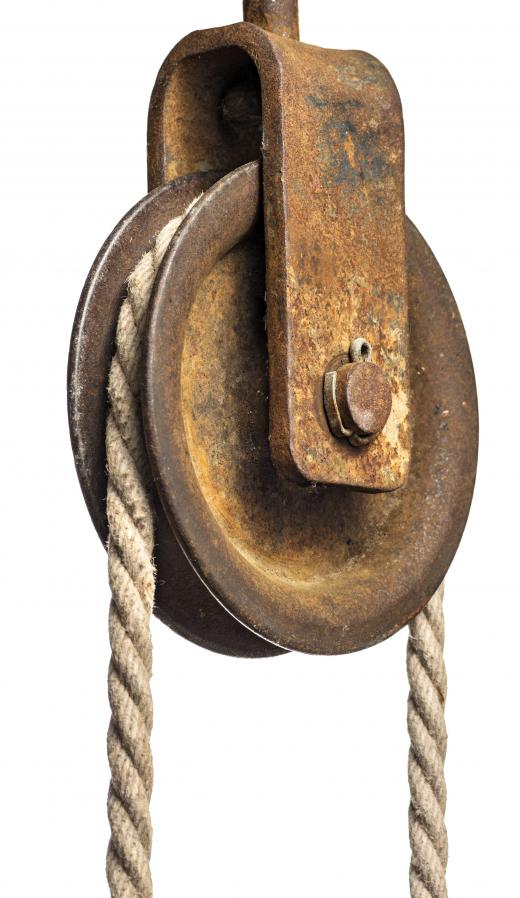Pulley systems are simple mechanical devices that are used in a variety of settings to save space and mechanical energy. In their simplest form, they consist of a rope that runs through a grooved wheel. The rope is passed through the wheel and attached to an object that needs to be moved; the opposite end is pulled either by hand or mechanically. By using a pulley system, the object is can be moved more easily, and in a way that requires less space than if the object were attempted to be moved directly.
The simplest pulley systems are fixed pulleys. In these systems, the wheel that enables the pulley action is attached to a solid object and able to turn but not move in any other way. Fixed pulleys are designed to lift or lower objects. When the object reaches the desired height it can then be disconnected from the system and placed where needed.

A more advanced category of system is the movable pulley. These systems are like the fixed pulleys but allow the pulley itself to move as needed when force is applied. Systems like these can help a worker move an object in almost any direction. They offer the advantage of decreasing the amount of force needed to move the object, as well as being able to be set up in such a way that space is conserved.

When pulley systems are designed to include a fixed pulley and a movable pulley, or more than one of each, they are called compound pulleys. There are several different examples of these. A movable pulley may be attached to an object and the rope threaded through both the movable pulley and an additional fixed pulley. Depending on how many pulleys are used and the direction of the force that is applied to the rope these systems may save even more energy than the previous methods. Although additional space is required for each pulley, these systems save the user more space than many other simple methods of moving objects.

Pulley systems such as these can be found in many factories and industrial locations. The large cranes that move objects in construction yards use compound pulley systems to move their loads. Flagpoles rely on fixed pulley systems to raise and lower flags.
